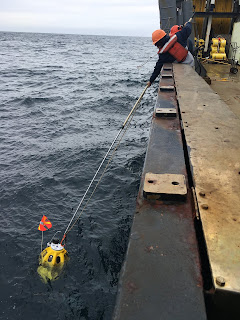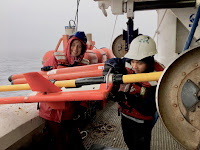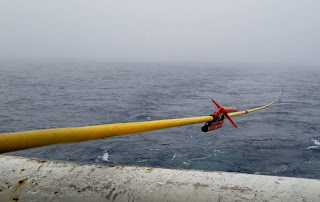During the transit...

A packed house for the finals of the ping pong tournament. Luan Nguyen squares off against Tim Kane. Following the successful completion of our program, we are transiting ~3000 km to port in Kodiak, Alaska. This trip took us back across the date line and along the Aleutian Islands and Alaska Peninsula, where we were treated to glimpses of distant, rugged mountains shrouded in clouds. Our newly collected data has kept us very busy. The long trip enabled us to complete onboard processing of seismic and bathymetric data, discuss initial observations from the data and share our preliminary results with the rest of the Langseth ’s crew. We are seeing all kinds of interesting and unexpected things in the data. We may even get close to completing the cruise report before we come into port, which would a minor miracle. Mei Liu and her model OBS But the transit has also given us a chance for some recreation now that our main data collection dut...





